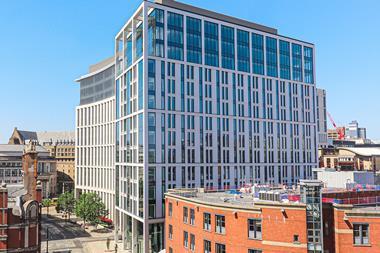
In fact, estimates suggest that office vacancies could reach highs of 10.5% across Europe by 2022, compared with historic lows of just 5.9% pre-pandemic.
With predictions from Cushman & Wakefield on the global outlook for the office sector suggesting that London could find it particularly hard to return to pre-Covid levels of office demand and occupancy, now is the time for UK landlords to future-proof their assets.
Technology must be key to this effort. In the immediate term, smart tech solutions – from workplace management platforms to sensors, movement tracking apps and digitally enhanced ventilation systems – will play a crucial part in encouraging a safe return to the office and reducing void space for landlords.
With businesses becoming more agile and their appetite for office space changing, landlords should take steps now to best extract value and maximise return on investment across their commercial property assets – and again, technology has a role to play in this.
Commercial real estate will need to become far more than just desk space and meeting rooms. Flexible workspace, for instance, is primed to thrive in the wake of the pandemic, offering enhanced customer experience and reduced financial commitments over a more flexible lease period than traditional office space.
Offices will need to become a ‘digital nucleus’, providing robust connectivity and integrated video conferencing options to power more footloose workers. In fact, even prior to the pandemic, well-connected buildings could profit from a 5% ‘digital premium’ on rents in the capital.
Covid-19 is a watershed moment for the CRE sector, an opportunity to integrate smart technology, diversify assets and prioritise connectivity. Those that don’t rise to the challenge risk being left behind.
Richard Morris, director, technologywithin
































No comments yet